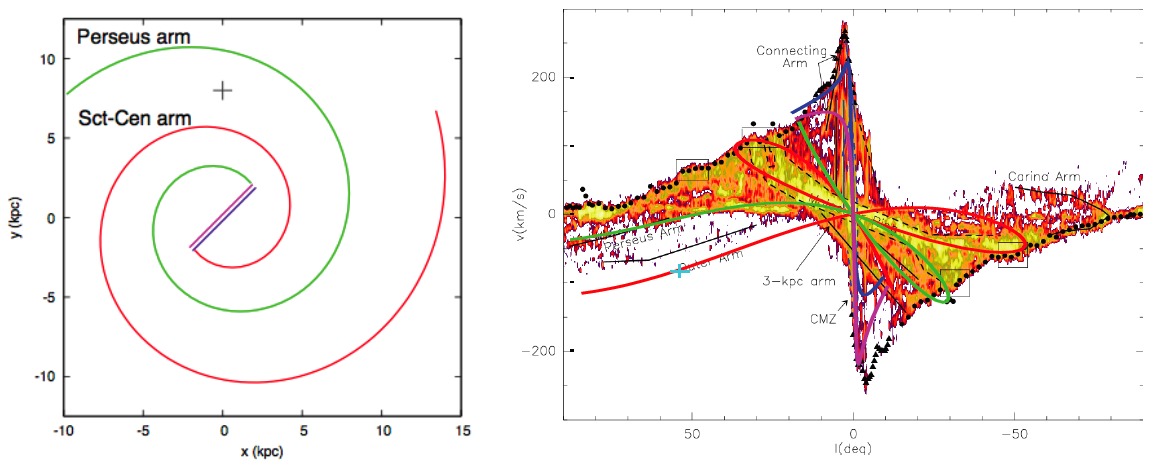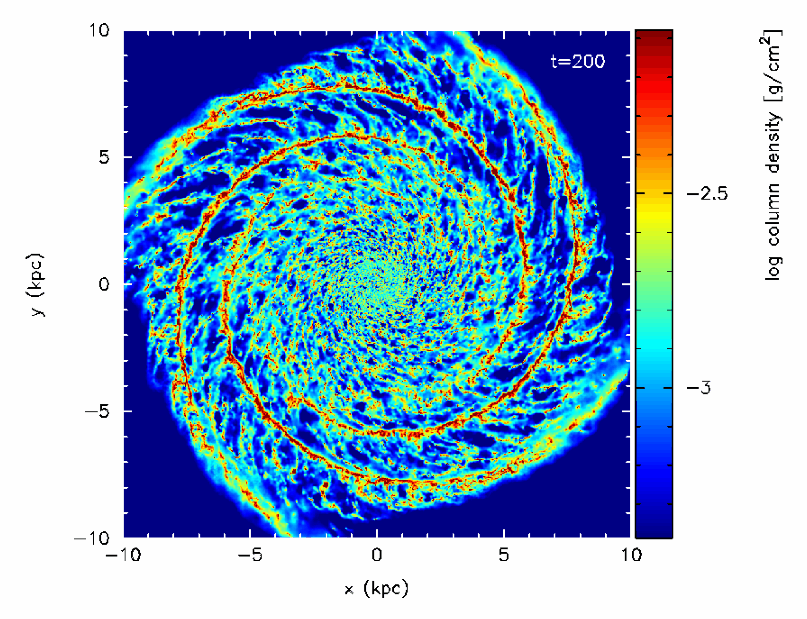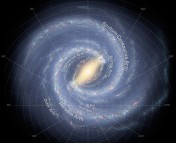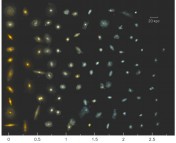- Title: The myth of the molecular ring
- Authors: C.L. Dobbs and A. Burkert
- First Author’s Institution: Max Planck Institut fuer extraterrestrische Physik, Garching, Germany
When astronomers try to understand the structure of our own Galaxy, things get very complicated, and the observations are intrinsically more difficult due to the thick layers of gas and dust in the galactic disk where our Sun is located: it’s like trying to see the forest from the trees.

The spiral structure of our galaxy in an artist's conception, with two major stellar arms and a bar.
In fact, despite decades of observations, many doubts on the spiral structure of our Milky Way stand still: it is not even clear how many primary spiral arms the Galaxy contains (2, 3 or even 4) and whether the spiral structure of the gas and the stars are different. Another intriguing issue is related to the so called “molecular ring”, which is a dominant structure in the distribution of the molecular gas, traced by CO emission. Observations suggest that most of the molecular clouds of the Milky Way are located in a ring encircling the galactic center, between an inner radius of around 3 and an outer radius of around 5 kiloparsec (numbers are actually uncertain), where for reference our Sun is 8 kiloparsec away from the center.
On the other hand, simulations of spiral galaxies have suggested that the ring might be an apparent feature produced, for example, by simple emission from nearby spiral arms.
The authors of this paper do not attempt to use the gas or stellar distribution to infer the spiral structure, as both techniques are far from straightforward. They rather adopt a “forward” approach, assuming that the gaseous spiral arms exhibit some spiral pattern, placing an observer at a distance of 8 kiloparsec from the center of the Galaxy (our distance), and seeing how well the observed CO emission can be reproduced.
The match between the models and the CO observations could be simply done by eye, comparing features such as the molecular ring, Perseus Arm and Outer Arm. However the authors also carry out a chi squared fitting between the observed map of rotational velocity versus galactic longitude and the similar maps produced by the model, to jugde the quality of the their model.

The best fit to the molecular ring for a 2 armed spiral pattern (shown in the left panel, where the cross indicates the observer). In the velocity longitude map on the right, circles and crosses represent the observational data, while the colored lines show the model prediction.
Many possible structures are examined, including logarithmic spiral arms, a bar, and of course also the case in which the molecular ring is really due to a ring. The free parameters of the models are the pitch angle of the spiral arms; the radius of a ring feature; the orientation of the spiral arms, the length and orientation of the bar; the Galactocentric radius and the rotation velocity. In principle, these parameters are completely free, but of course it is convenient to start exploring the large parameter space with the location of the observer, the rotation curve, and the orientation of the bar roughly based on observations.
Surprisingly, the authors find that it is relatively easy to generate a configuration for the spiral arms such that the region corresponding to the molecular ring is reproduced by a nearby spiral arm. Increasing or decreasing the pitch angle of the arms changes the extent of the molecular ring. Finally, not only the spiral arms alone can reproduce the observed feature of the molecular ring, without any need for a real ring, but they also provide a better fit to the observations, as both a spiral arm and the observed feature called “molecular ring” are curved in the velocity-longitude diagram, while a true ring is not.




